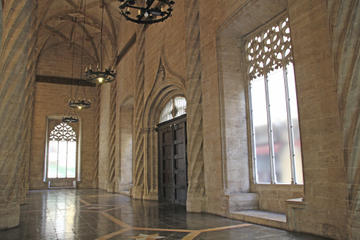Silk Exchange (La Lonja de la Seda)
TIME : 2016/2/22 14:06:54

Silk Exchange (La Lonja de la Seda)
During the 15th century, Valencia reached the height of its success as one of Europe’s most important mercantile cities. So come the end of that century, it was decided to construct a building where trading could take place. The result was La Lonja de la Seda (the Silk Exchange), which is one of the finest examples around of civil Gothic architecture and a sight to behold in this Spanish coastal city.
A UNESCO World Heritage site, the secular building is composed of four principal areas, the largest of which is the Trading Hall, which occupies roughly half of the entire property. This main room is where the majority of business went down and is no doubt the most impressive given its shiny marble floors, and spiraling columns that bloom into a vaulted ceiling of palm-tree-frond-like arches. Look carefully along the upper perimeter of the room and you’ll even notice golden Latin letters emphasizing the principles of honest trade.
The other main areas of the Silk Exchange are broken out into the Consulate of the Sea, with its intricate gold-gilt ceiling; the orange tree-filled Patio de los Naranjos; and the chapel-based tower, which once served as a prison for those traders who couldn't pay their debts.
Practical Info
The Silk Exchange is open daily, with reduced hours on Sundays and holidays. It is centrally located, just opposite Valencia’s Mercado Central, and only steps away from a bus stop that serves several different lines.
